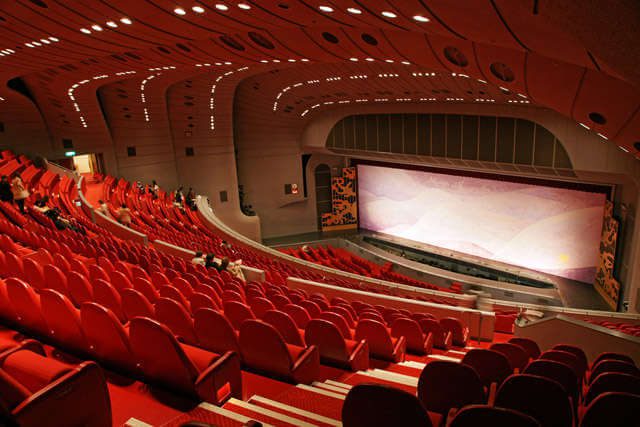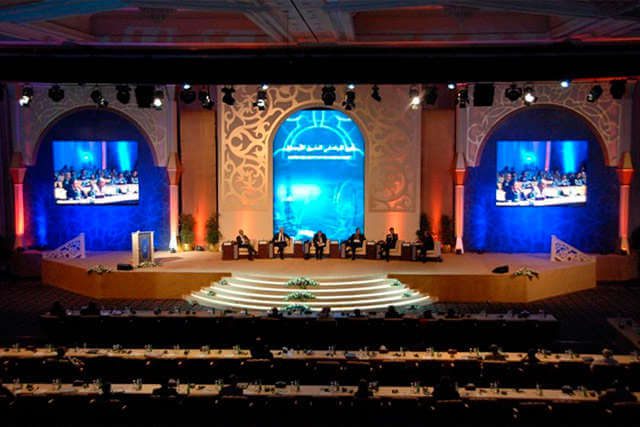Retail Theater: Successfully Competing in an Online Economy
By Michael Seid, Managing Director, MSA Worldwide
When executed properly, retailers and restaurants are essentially theater, designed to engage consumers and deliver successfully on a company’s brand promise. Consistency in delivery to consumers is at the heart of every great brand.
Franchising – with its systems for training and support – is especially gifted at delivering its products and services uniformly. But, it is how each franchisee is able to maximize the experience for consumers, within the franchisor’s system, that leads to great operations and financial performance.
Consumers are overwhelmed with choice today. While price and convenience have become the hallmarks of the electronic merchant, the ability of the brick-and-mortar merchant to make a connection and engage with the shopper in real time remains retail’s most effective and competitive tool. Creating an environment that attracts customers into stores is essential.
What is most important, however, is winning customer loyalty so that they return as repeat buyers. Retail Theatrics – delivering a retail experience with the unique excitement that only a live presentation allows – provides the buyer with an informative and differentiated experience.
The Internet opened up the world of “non-geographic” retail, where consumers need not visit a brick-and-mortar location to make their purchases. The challenge today is to make every consumer visit to your location a compelling necessity – not merely an alternative.
Adapting to Demographic Changes
How consumers shop today has also changed because of demographic shifts. The population is more diverse in age, background, ethnicity, and expectations. Consumer priorities have changed. Where they shop has changed. And when they want to buy has changed.
The problem for brick-and-mortar retailers in competing with Amazon, and other etailers, is that their cost differential allows them to meet most of what customers buy at better pricing, and with better delivery, than most landed stores can muster. While brands will endure, a landed location’s growth or decline will ultimately depend on the loyalty and satisfaction of its customers.
As brick-and-mortar operators, your expertise in how you use your brands; how you merchandise your floor; how you integrate technology; how you communicate on social media; and how you engage your unique customer all determine your survival and financial success.
While online pricing with lower costs is a dominant factor in making online sales, consumers also perceive etailers as more convenient, less time-consuming, more informative, and more hassle-free. The good news is that some studies show the trend can be reversed. And after the social restrictions of Covid-19 pandemic, many consumers are hungry for real-world interactions.
Nothing can match a face-to-face retailing experience – when it is done right.
Consider the theater of an Apple store. The palpable excitement in Apple retail stores is absent from big-box retailers. The information available about Apple products both within the store and online, consistent messaging on product exclusivity, and methods of engaging with customers, are advantages that other big-box retailers have been unable to match. To be sustainable, retailers must bring their brands and in-store experiences to life.
Franchisees are fortunate; the brands they license from their franchisors generally lend immediate credibility for consumers. The consumer’s positive feeling about a franchised brand creates a halo effect that extends to all of the franchise locations. You can also see this effect with retailers that leverage the products of well-known celebrities or respected designers – even when the name on the product is not generally what the celebrity or designer is known for. How you leverage and present the brands at your location impacts the consumer’s perceptions of your value as a shopping destination.
Good service, consistency, and convenience are no longer sufficient to be competitive. If they were, Sears and JC Penney would still be relevant. Retailers need to transform their stores into brand experiences, because today’s consumer has an overwhelming array of options. Making the retail experience unique and memorable means delivering it in a way that engages consumers and successfully delivers on our brand promise.
The Power of Retail Theatrics
Give consumers a compelling reason to leave the comfort of their homes and travel to your brick-and-mortar retail store. To deliver an exciting and differentiated in-person experience, both merchant and consumer take part in a scripted, yet impromptu, retail play. When successfully performed, Retail Theatrics creates an experience that turns customers into fans willing to share their purchasing experiences online, through social media, and in conversations with their friends and family.
Great merchants were executing their consumer offerings like a theater experience long before the Internet even existed. Today, most augment their landed experience with the inclusion of electronic tools.
Exemplar of Retail Theater: Marriott
I travel a lot, as does most of MSA Worldwide’s staff; during the year I stay at a Marriott property well over 100 nights. I trust the Marriott brand and am Lifetime Platinum in their guest program. The information on their website is easily available, and detailed enough to let me know what each property offers and how far it is from where I need to be. Booking a room is fast and convenient, and Marriott links to other brands, like Hertz, where I may also need to make a reservation, generally at a discount. I know the quality of the room will be high and consistent regardless of where I am in the world, and I know each room will have the fittings I expect.
Marriott has personalized their relationship with me. I check in online, and my room key is ready to pick up when I arrive. I also alert them of the time of my arrival so that I know my room will be ready. My general profile lets them know that I require extra towels, a robe, and extra feather pillows in my room, and most of their locations have a lounge area for their frequent travelers to rest, have a snack or drink, watch a game on TV, or simply hold a meeting. Other hotel chains have similar features today, but Marriott has earned my loyalty because they have never disappointed me.
When I arrive at a Marriott location I am greeted generally by name and, as a thank-you, am offered a gift from their Marriott store or points I can use for another stay. Despite the immense size of their system, they treat me as an individual.
CostCo: A Gem
Brands that hold surprises for me grab my attention and loyalty. The Costco experience is well known, and they dominate their segment in the breadth of offering, price, and service. Recently I was visiting one of MSA’s clients in the jewelry field and asked for recommendations about purchasing a diamond ring for my wife. Their advice surprised me: karate for karat, it turns out that Costco sells the best diamonds on the market and at prices below what most jewelers can purchase at wholesale. Costco goes out of its way to exceeding what you expect from them.
Nordstrom: Customer Service Paragon
Shopping at Nordstrom is pure theater. Not only does Nordstrom understand retailing, they know what I buy. I appreciate that difference from Macy’s; the Nordstrom sales associate stays with me while I am shopping and makes suggestions on what would look good and what I should avoid. When the sale is completed, they wrap each item in the paper, put the items into a bag, and instead of handing the bag to me over the counter, they walk around and present it to me, making me feel that what I bought was important and that I am important to them also.
Nordstrom also owns my loyalty for other reasons. For example, I purchased a lightweight leather jacket from them a few years back and when I got home I put on the jacket, caught it on a nail, and put a slight tear in the sleeve. I sent the jacket for repair to a leather repair service and forgot about the incident. That is, until I went into a Nordstrom a year or so later wearing that same jacket. A salesperson I had never met came running up to me and asked if I had purchased the jacket from them. I told him I did and he asked me for the jacket. I thought it odd, but took it off and gave it to him. He went over to the rack, picked out the same jacket in my size, and simply said, “We can’t have you wearing one of our jackets with a tear in it.” The tear was small, repaired, and barely noticeable; he did not know me – nor did he know how much I purchase at Nordstrom. Every committed Nordstrom customer has likely had a similar experience.
Why Do Customers Shop with You?
It’s essential you understand your brand and why your customers shop with you. Based upon blind taste tests when designing retail convenience stores and restaurants that offer coffee, I’m convinced people don’t go to Starbucks for the taste of their coffee. Other specialty coffee chains, including Dunkin’ Donuts and even some gas station coffee, are preferred in some blind taste tests. Yet Starbucks has achieved the ability to sell their product at a premium price – and their ability to do so is tied to their retail theatre approach of marketing coffee.
The in-store Starbucks experience is designed to make you feel more sophisticated than buying coffee elsewhere; they have achieved a similar feeling to what people get from a specialty retailer like Bloomingdales. Both Starbucks and Bloomingdales design their retail experiences to enhance how a person views their self-worth and sophistication by shopping in their stores. Both Starbucks and Dunkin’ Donuts sell coffee, but each knows its customer, and you can feel the difference in the approach each brand takes.
Disney: A Theater Company
Disney is another interesting retail merchant. There is a difference in quality and assortment between the merchandise they sell at their theme parks, their branded stores, and the merchandise sold at non-branded retailers. At its heart, Disney is a theater company that sells movie-based merchandise – what Disney calls its franchises.
Some years back, the Disney Stores in the United States, which were run by a licensee and not by Disney itself, had become old, in disrepair, and with a confusing retail mix. Disney launched a new approach to retailing at their London stores, based out of their London offices and leveraging the global Disney team. Through integration of etail and retail, Disney enabled customers to view and learn about what is available in the stores online. The store design also changed, with addition of a massive video screen playing clips of Disney films and shows, and providing other information about Disney. The store designers built a large kiosk for children to play in and watch videos while their parents shopped, and improved store lighting with a colored path on the floor for the customer to follow, enabling them to discover more than the typical franchise merchandise. (Stew Leonard, a specialty grocer in New England, had made the ‘path’ approach part of their retail theatre years before.) Disney also organized the store by movie franchise rather than separating, as many retailers do, girls, boys, men and women – making the family shopping experience easier.
As you enter the new London Disney store, you are greeted by staff wearing headphones that convey to other staff in the store both the franchise merchandise you are looking for and other key information, such as whether you have a child in hand or in a carriage. Depending on that information, the sales staff provides the customer with either a bag or a basket to carry the merchandise they select. As the customer shops and the bag or basket becomes full, the staff takes the merchandise from the customer and brings it to the back of the cash desk, therefore freeing the customer’s hands so they can buy more. The number of cash desks has been increased, using a ‘snake’ approach (similar to that used by Wendy’s) instead of individual cash register lines, and each cash register is carefully watched to keep the wait time to a minimum. Disney has developed its retail theatre so that its stores are the “happiest place in the mall” for mothers to bring their children to shop.
Apple: Knowledge and Enthusiasm
Disney isn’t the only retailer using a front-line team to greet customers and communicate with sales associates and other staff. Apple uses a similar approach. The Apple greeter can confirm appointments and wait times at the Genius Bar, and directly communicate with staff to call them forward to meet with you to discuss what you are shopping for. The excitement about the interactive experience at Apple stems from their associates, who have deep product knowledge and are seemingly born with a vibrant and helpful personality. The Apple Store is filled with tables full of products you can try out and, like Disney, an area with iPads that children can play with while you shop. You can research products online or at the store, and schedule to pick them up at the local store. You can book time online at the Genius Bar and get updates on the time of your appointment. Most important, from a customer service standpoint, is that rather than sell you the products and have you wait in line at a cash desk, they bring the cash desk to you, as a hand-held credit card reader. In addition to speeding up your shopping experience, Apple is able to capture key information about you so that they can keep you informed later about new products and features they have available.
Integrating Etailing with Brick-and-Mortar Operations
There are a host of reasons why blending etail and theatre-based brick-and-mortar retailing should be pursued, including the power of technology to improve customer service and reduce the cost of labor. Technology companies have revolutionized how restaurant customers order and pay. Customers can scan a menu, check calorie counts, search for allergy-friendly items, and order their food online on their iPhone or Android device. During the meal, if they choose not to interact with the server, they can order additional items and/or pay for their meal through either the mobile or web app. All of this is connected to the restaurant’s IT system, improving the restaurant’s efficiency with lower labor costs. This is the type of application millennials have been looking for in their sit-down meal experience.
Three Basic Questions
In changing how you approach landed operations to create a complete retail theater experience, ask yourself three basic questions:
- Who is, or who should be, my customer?
- What are the products they want to buy from me?
- How do they want to buy from me?
Personalize Product Benefits and Features
It’s fine to sell the features and benefits of the products you offer; but first, ask the customer how they are going to use your products. Your salespeople can’t simply be experts in your products – they have to engage the customer about how the customer is going to use the product, and do so individually. Like an improv actor working with other cast members, if they can create an interactive relationship with the shopper, they can make them a buyer. Selling today is aspirational, not technical. While price is of course an element of the purchase decision, within limits, retail theater levels the playing field, even when there is a price differential that the customer can earn by shopping online.
Make it Easy for Customers to Access Product Information
Engage your customers with information they want in the way they want to receive it. Most people today want to research products online. Hoping you can make the sale after they go home and do more research is not logical. Likely, since they have physically seen the products in your store, all you have done by letting them go home and do their research online is enable them to make their purchases online. Consider including iPads and other electronic methods that your customers can use while in your stores to compare the features and benefits of the individual products, in the way they want to. Rather than fear the Internet as a competitor, consider how you can include it as part of your retailing strategy.
Does Your Store Look Compelling?
Critique your store as if you were a customer. From the street as you drive by, from your parking lot, and from how you look through your windows – shop your own stores. If your signage is old and tired, if you don’t give the customer a reason to stop and come in, they won’t. Blocking windows with large signage eliminates a customer’s ability to feel excited about entering your store. A busy store visible to the consumer creates that excitement, and motivates them to come into your store. How you can make consumers feel that excitement even as they drive by at 60 miles an hour? Learn from Apple – bright lighting attracts more than bugs; bright lighting attracts retail customers.
Have Tech-Savvy Staff
Have a staff that looks and acts as good as the products you sell. It’s painful to assess the sales associates you have and discover that some of your most loyal employees are no longer additive to your retailing success. You need to attract, train, manage, motivate and compensate sales associates who can create retail theater in your locations. If staff view digital as a threat and can’t interact with consumers in the way consumers want to shop, they simply can’t become part of your changeover to retail theatre. Connecting with a younger and more etail-centric buyer does not require that your sales staff be in their 30s; it only means that they be able to adapt their style and have an impact on the buyer, regardless of their age.
Let your staff help you consider how information technology can fit into your retail store in assessing how well they can adopt the change. Remember, having the customer research the products you sell in the store online is not a threat, if that is how the consumer is comfortable making their buying decision. If your sales team can’t move away from selling the features and benefits to consumers as if they were a generic customer and instead move to personalize the selling experience in a way your retail audience wants to buy, they are not going to enable you to transform your approach to retailing. Transforming into an interactive selling approach is not an option in the detailing economy; it is essential.
Create a Meaningful Social Experience
Take your retail floor, graphics, and presentation to new heights and create a meaningful social experience in your physical retail environment. Create an environment that gets your customers out of the warmth and comfort of their homes and into your stores by swiftly exceeding their expectations. Music and video screens with content that engages customers – information that is more than a mere recitation of product features and gives life to how the product is used – graphics that reflect the consumer and how you want the consumer to think of themselves using your products – all are ways to stage the retail floor for success.
Finally, remember that most negative comments online are not about the sales process. People, unfortunately, have come to expect the sales process to be boring, a bit time-consuming, and often painful. Unless they are positively surprised like at Apple or Nordstrom, an average performance likely won’t even be noticed. Negative comments generally are about speed of delivery and the quality of the product and its installation, if that is required. Some of the most positive comments online are often about how you deal with problems when they occur. Understanding the customer experience after the sale is essential to changing how you blend detailing with retailing. Yelp can be your main advocate, or caste a pall over your entire business.
If your business involves going to a customer’s home, how your sales and installation team look is important. It may still be common with many installation crews, but butt cracks on installers went out with Jackie Gleason. When your sales and installation staff walk into someone’s home in a dirty uniform and work boots not covered in booties to protect a customer’s floors, the customer views that as a lack of common courtesy. When your installation crew does not have the parts needed to complete an installation the first time, your business will not be seen as professional. And, it should go without saying that how your delivery vehicles look is important, since they are an extension of your retail environment.
Extraordinary retailers will not only survive the transition to the retail theater; they will become more extraordinary because of it. Making the transition to an effective landed retailer requires that you examine each level of your shopping experience and redevelop what you do, so that you can positively surprise your shopper, and sell to them individually in the way they want to buy.
Do you have questions about franchising?
MSA Worldwide provides expert guidance on developing and managing a successful and sustainable franchise system. Contact us today for a complimentary consultation.







